History
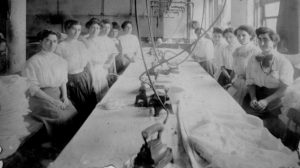 Fire safety measures have vastly improved over the years, but in the early 1900s, no such safety measures existed. That would prove deadly on March 25, 1911 in New York City. People didn’t really know about materials that were more flammable, other than wood. Nevertheless, wood was the main material used in buildings, and in fact, still is today. The Triangle Shirtwaist Company factory was owned by Max Blanck and Isaac Harris. It was located in the top three floors of the Asch Building, on the corner of Greene Street and Washington Place, in Manhattan. These days that is not really a place we would expect to see a factory…much less a sweatshop, but the Triangle Shirtwaist Company’s factory was a true sweatshop. They employed mostly young immigrant women who worked in a cramped space at lines of sewing machines. Nearly all the workers were teenaged girls who did not speak English and made only about $15 per week working 12 hours a day, every day.
Fire safety measures have vastly improved over the years, but in the early 1900s, no such safety measures existed. That would prove deadly on March 25, 1911 in New York City. People didn’t really know about materials that were more flammable, other than wood. Nevertheless, wood was the main material used in buildings, and in fact, still is today. The Triangle Shirtwaist Company factory was owned by Max Blanck and Isaac Harris. It was located in the top three floors of the Asch Building, on the corner of Greene Street and Washington Place, in Manhattan. These days that is not really a place we would expect to see a factory…much less a sweatshop, but the Triangle Shirtwaist Company’s factory was a true sweatshop. They employed mostly young immigrant women who worked in a cramped space at lines of sewing machines. Nearly all the workers were teenaged girls who did not speak English and made only about $15 per week working 12 hours a day, every day.
In 1911, the Asch Building had four elevators with access to the factory floors, but only one was fully operational and the workers had to file down a long, narrow corridor in order to reach it. There were also two stairways down to the street, but one was locked from the outside to prevent stealing and the door of the other only opened inward. The fire escape was so narrow that it would have taken hours for all the workers to use it, even in the best of circumstances…in an emergency, it was almost useless. Pretty much everyone knew about the danger of fire in factories like the Triangle Shirtwaist Company factory, but high levels of corruption in both the garment industry and city government ensured that no useful precautions were taken to prevent fires. The 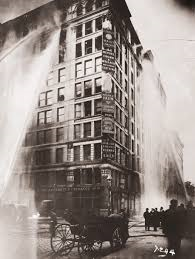 problem was that making the factories safe cost money, and dug into the profits, so the owners didn’t want to do what was necessary to save lives. The Triangle Shirtwaist Company factory’s owners were known to be particularly anti-worker in their policies and had played a critical role in breaking a large strike by workers the previous year.
problem was that making the factories safe cost money, and dug into the profits, so the owners didn’t want to do what was necessary to save lives. The Triangle Shirtwaist Company factory’s owners were known to be particularly anti-worker in their policies and had played a critical role in breaking a large strike by workers the previous year.
On March 25, a Saturday afternoon, there were 600 workers at the factory when a fire began in a rag bin. The manager attempted to use the fire hose to extinguish it, but was unsuccessful. The hose was rotted and its valve was rusted shut. They were at the mercy of the raging inferno. The fire grew and the workers panicked. They tried to exit the building by the elevator, but it could only hold 12 people and the operator was able to make just four trips before it broke down due to the heat and flames. In a desperate attempt to escape the flames. The girls left behind waiting for the elevator plunged down the shaft to their deaths. The girls who fled by way of the stairwells also met awful fates. When they found a locked door at the bottom of the stairs, many were burned alive. In all, 145 workers between the ages of 14 and 43, mostly women and mostly in their teens and early twenties, died that day. Six of them would not be identified until February, 2011…100 years later.
Once the fire was reported, the firefighters tried to put it out, but their ladders would only reach the seventh floor. The fire was on the eighth floor. When escape was proven to be impossible, the girls, desperate to escape the searing heat and flames, began to jump. The bodies of those who jumped landed on the hoses, hampering the flow. The firemen got out nets to catch the girls, but they jumped three at a time, tearing the nets. The nets were of no real help. Within 18 minutes, it was all over. Of the dead, 49 workers had burned to death or been suffocated by smoke, 36 were dead in the elevator shaft and 58 died from jumping to the sidewalks. Two 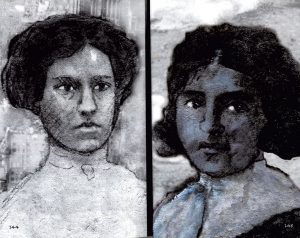 more died later from their injuries. The workers’ union set up a march on April 5 on New York’s Fifth Avenue to protest the conditions that had led to the fire. It was attended by 80,000 outraged people. Despite a good deal of evidence that the owners and management had been horribly negligent in the fire, a grand jury failed to indict them on manslaughter charges. The tragedy did result in some good, however. The International Ladies Garment Workers Union was formed in the aftermath of the fire and the Sullivan-Hoey Fire Prevention Law was passed in New York that October. Both were crucial in preventing similar disasters in the future. Still, I think that it will take the memory of the victims of corruption to ever really inspire people to change the way things are.
more died later from their injuries. The workers’ union set up a march on April 5 on New York’s Fifth Avenue to protest the conditions that had led to the fire. It was attended by 80,000 outraged people. Despite a good deal of evidence that the owners and management had been horribly negligent in the fire, a grand jury failed to indict them on manslaughter charges. The tragedy did result in some good, however. The International Ladies Garment Workers Union was formed in the aftermath of the fire and the Sullivan-Hoey Fire Prevention Law was passed in New York that October. Both were crucial in preventing similar disasters in the future. Still, I think that it will take the memory of the victims of corruption to ever really inspire people to change the way things are.
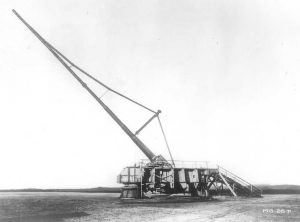
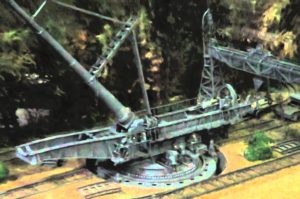 It seems as if the nations will never be satisfied until they have a new and stronger weapon that will easily destroy a massive amount of people in one shot. Wars are a part of life here on Earth, and will be until the end of time, so we might as well get used to that fact. World War I was not a different time when it comes to weapons of war, in fact on March 23, 1918 at 7:20am, an explosion took place in the Place de la Republique in Paris, and it hailed the first attack of a new German gun. The Pariskanone, Paris-Geschütz, or Paris gun, as it came to be known, was manufactured by Krupps. The Pariskanone was 210mm, with a 118-foot-long barrel. It could fire a shell an impressive distance of some 130,000 feet…25 miles into the air. Three of them fired on Paris that day from a gun site at CrÉpy-en-Laonnaise, a full 74 miles away. The city of Paris was reeling. Paris had withstood all earlier attempts at its destruction, including scattered bombings, but this would be different. It was first thought by the Paris Defense Service, that the city was being bombed, but soon they determined that it was actually being hit by artillery fire. It was a previously unimagined situation. I’m sure everyone wondered how the Germans could have made such a weapon.
It seems as if the nations will never be satisfied until they have a new and stronger weapon that will easily destroy a massive amount of people in one shot. Wars are a part of life here on Earth, and will be until the end of time, so we might as well get used to that fact. World War I was not a different time when it comes to weapons of war, in fact on March 23, 1918 at 7:20am, an explosion took place in the Place de la Republique in Paris, and it hailed the first attack of a new German gun. The Pariskanone, Paris-Geschütz, or Paris gun, as it came to be known, was manufactured by Krupps. The Pariskanone was 210mm, with a 118-foot-long barrel. It could fire a shell an impressive distance of some 130,000 feet…25 miles into the air. Three of them fired on Paris that day from a gun site at CrÉpy-en-Laonnaise, a full 74 miles away. The city of Paris was reeling. Paris had withstood all earlier attempts at its destruction, including scattered bombings, but this would be different. It was first thought by the Paris Defense Service, that the city was being bombed, but soon they determined that it was actually being hit by artillery fire. It was a previously unimagined situation. I’m sure everyone wondered how the Germans could have made such a weapon.
Before the day was over, the shelling had killed 16 people and wounded 29 more. The Germans continued the shelling of that year in several phases between March 23 and August 9, 1918. Over that time, the gun caused a total of 260 deaths in Paris. It was a low number due to the fact that the residents of Paris quickly learned to avoid gathering in large groups during periods of shelling. With less people in each area, the casualties were limited substantially. Nevertheless, the weapon had a terrifying effect on the people and a horrific impact on property in the areas of the shelling. Almost all information about the Pariskanone, one of the most sophisticated weapons to emerge out of World War I, disappeared after the war ended. Later, the Nazis tried 
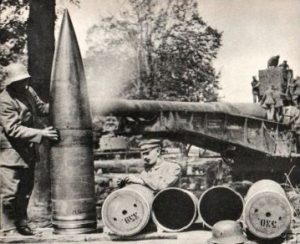 without success to reproduce the gun from the few pictures and diagrams that remained. Copies were deployed in 1940 against Britain across the English Channel, but failed to cause any significant damage….a good thing for the people of the Britain at that time. When I look at the pictures of the weapon, I am reminded of the old “Wild, Wild, West” show. There always seemed to be some strange new fangled weapon of destruction in use there too.
without success to reproduce the gun from the few pictures and diagrams that remained. Copies were deployed in 1940 against Britain across the English Channel, but failed to cause any significant damage….a good thing for the people of the Britain at that time. When I look at the pictures of the weapon, I am reminded of the old “Wild, Wild, West” show. There always seemed to be some strange new fangled weapon of destruction in use there too.

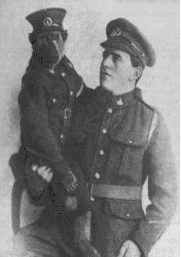 When World War I broke out, many young men were called into service. It is a common part of war…one we all know about, and most parents dread. World War I was unique in one way, however. There was a soldier who went to war who was different. He was not different in the way he served exactly, but rather in some other very obvious ways. His speech was different. His mentality was somewhat different, and his looks were different. I’m not being discriminatory, but simply stating a fact. His name was Jackie, and he was different because he was a monkey, well actually, he was a Chacma baboon (Papio ursinus). Jackie was found in August 1915 near the Marr’s family farm in Villeria, Pretoria, South Africa by Albert Marr and soon became a beloved pet.
When World War I broke out, many young men were called into service. It is a common part of war…one we all know about, and most parents dread. World War I was unique in one way, however. There was a soldier who went to war who was different. He was not different in the way he served exactly, but rather in some other very obvious ways. His speech was different. His mentality was somewhat different, and his looks were different. I’m not being discriminatory, but simply stating a fact. His name was Jackie, and he was different because he was a monkey, well actually, he was a Chacma baboon (Papio ursinus). Jackie was found in August 1915 near the Marr’s family farm in Villeria, Pretoria, South Africa by Albert Marr and soon became a beloved pet.
When the war started and the young men were drafted, Albert was no exception. The thing is that Albert couldn’t stand the thought of leaving his beloved pet at home. Albert was assigned to service at Potchefstroom in the North West province of South Africa as private number 4927 for the newly formed 3rd Transvaal Regiment of the 1st South African Infantry Brigade on the 25th August 1915. He approached his superiors and requested that Jackie be allowed to go with him and amazingly was given permission. I’m sure that seems as odd to you as it did to me, but it goes further. Once enlisted Jackie was given a special uniform complete with buttons, a cap, regimental badges, a pay book and his own rations. He was a true member of the regiment, but that doesn’t mean he was accepted as a part of it…at first anyway. The other members of the regiment initially ignored Jackie, but like most people around a monkey, or in this case, baboon, it was hard to ignore him for very long. Jackie soon became the official mascot of the 3rd Transvaal Regiment. Jackie took his duties very seriously, however. He wasn’t there just to eat and fool around!
Jackie was very smart, and when he saw a superior officer passing, he would stand to attention and even provide them with the correct salute. He would light cigarettes for his comrades in arms and was, without a doubt, the best sentry around, due to his great senses of hearing and smelling which allowed him to be able to detect any enemy long before any of his other army mates could even notice their approach. He wasn’t a coddled pet protected for the battles either. Jackie spent three years in the front line amongst the trenches of France and Flanders in Europe. During the Senussi Campaign on 26 February 1916 in Egypt, Jackie’s beloved Albert got wounded on his shoulder by an enemy bullet. Jackie stayed beside him until the stretcher bearers arrived, licking the wound and doing what he could to comfort his friend.
Albert and Jackie both held the rank of private, and in April of 1918, both got injured in the Passchendaele area in Belgium during a heavy fire. With explosions surrounding them, Jackie was seen trying to get some protection by building a little fortress of stones around himself. He didn’t manage to finish his little safe area soon enough, and was hit by a chunk of shrapnel from a shell explosion nearby, which also injured Albert. Jackie’s right leg was seriously wounded and later had to be amputated. Jackie and Albert both made a full recovery and shortly before the armistice, Jackie was promoted to corporal, and awarded a medal for valor.
At the end of April, Jackie was officially discharged at the Maitland Dispersal Camp, Cape Town, South Africa, while wearing on his arm a gold wound stripe and three blue service chevrons indicating three years of frontline service. He was given a parchment discharge paper, a military pension and a Civil Employment Form for 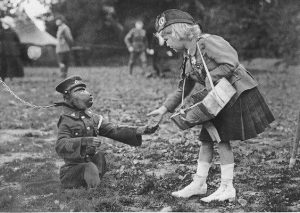
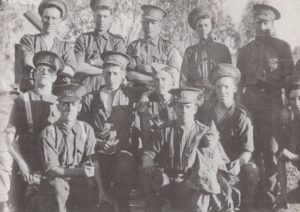 discharged soldiers. After his service, Jackie returned to the Marr’s farm where he lived until May 22, 1921…a sad day for all who knew him. Albert Marr lived until the age of 84 and died in Pretoria in August 1973. Jackie was an amazing Chacma Baboon who, because of a fateful connection, ended up as the only monkey to reach the rank of Corporal of the South African Infantry and fight in Egypt, Belgium and France during World War I. Now that’s amazing!!!
discharged soldiers. After his service, Jackie returned to the Marr’s farm where he lived until May 22, 1921…a sad day for all who knew him. Albert Marr lived until the age of 84 and died in Pretoria in August 1973. Jackie was an amazing Chacma Baboon who, because of a fateful connection, ended up as the only monkey to reach the rank of Corporal of the South African Infantry and fight in Egypt, Belgium and France during World War I. Now that’s amazing!!!
 When we think of computers, most of us think of the modern day laptop, or even our smart phones, and when we think of who invented the computer, we think of a man, and that would probably be right, but when NASA thinks of computers, they also have to include the Women of NASA. They were known as “human computers” long before desktop, laptops, or even multi-function calculators existed. Barbara “Barby” Canright joined California’s Jet Propulsion Laboratory in 1939. She was the first female “human computer” and her job was to calculate anything from how many rockets were needed to make a plane airborne to what kind of rocket propellants were needed to propel a spacecraft. She did her calculations by hand, with only a pencil and graph paper. It often took more than a week to complete, and her work commonly filled six to eight notebooks with data and formulas. After the Japanese attack on Pearl Harbor, her work, along with that of her mostly male teammates, took on a new meaning. There was important work to be done to secure the safety of our nation. The army needed to lift a 14,000 pound bomber into the air, and Barby was responsible for determining the thrust-to-weight ratio and comparing the performance of engines under various conditions, so they could make that happen. Due to the amount of work it was going to take to accomplish this task, more “computers” were hired, including three women Melba Nea, Virginia Prettyman and Macie Roberts.
When we think of computers, most of us think of the modern day laptop, or even our smart phones, and when we think of who invented the computer, we think of a man, and that would probably be right, but when NASA thinks of computers, they also have to include the Women of NASA. They were known as “human computers” long before desktop, laptops, or even multi-function calculators existed. Barbara “Barby” Canright joined California’s Jet Propulsion Laboratory in 1939. She was the first female “human computer” and her job was to calculate anything from how many rockets were needed to make a plane airborne to what kind of rocket propellants were needed to propel a spacecraft. She did her calculations by hand, with only a pencil and graph paper. It often took more than a week to complete, and her work commonly filled six to eight notebooks with data and formulas. After the Japanese attack on Pearl Harbor, her work, along with that of her mostly male teammates, took on a new meaning. There was important work to be done to secure the safety of our nation. The army needed to lift a 14,000 pound bomber into the air, and Barby was responsible for determining the thrust-to-weight ratio and comparing the performance of engines under various conditions, so they could make that happen. Due to the amount of work it was going to take to accomplish this task, more “computers” were hired, including three women Melba Nea, Virginia Prettyman and Macie Roberts.
It was a time when women were mostly homemakers, and in fact, often looked at as probably not able to understand complicated things like math, science, and engineering, but times were changing. We were a nation at war, and many of the men were fighting. Not only did the women step up to the plate, but they showed that they could understand the work they did, as well as, if not better than their male counterparts. In fact, they did their work so well, that their calculations would end up charting the course of many ground breaking missions that would carry United States astronauts to the moon and beyond. These women were an elite team of mathematicians, engineers and scientists, who were tasked with turning numbers into meaningful data at what would later become NASA’s Jet Propulsion Laboratory and Langley Research Center. They challenged NASA to let them show what they could do, and when NASA did so, they really shined. It was an eye-opening accomplishment, and one that I’m pretty sure many men thought couldn’t be done.
It’s a funny thing, in my mind, that they were called “human computers” though. I suppose the work they did was computing, but the terminology just seems odd. These days, we talk about someone having the mind of a computer, but we don’t call them a computer. I guess that’s because we have computers, and no one would think of a person in that way. The reality is that, while these women were breaking ground in previously uncharted territory, their services would never really become unnecessary. In fact, one of the earliest human computers still works at Jet Propulsion Laboratory. Sue Finley is 80 now, and NASA’s longest serving female employee. She was originally hired in 1958 to work on trajectory computations for rocket launches, and is now  a software tester and subsystem engineer. She is currently working on NASA’s mission to Jupiter. Her legacy, and that of the other early human computers, is literally written in the stars. What really amazes me is that many people over 70 have no idea how to work a computer, and yet here is this 80 year old woman who is a software tester and subsystem engineer. Amazing!! Totally amazing!!
a software tester and subsystem engineer. She is currently working on NASA’s mission to Jupiter. Her legacy, and that of the other early human computers, is literally written in the stars. What really amazes me is that many people over 70 have no idea how to work a computer, and yet here is this 80 year old woman who is a software tester and subsystem engineer. Amazing!! Totally amazing!!
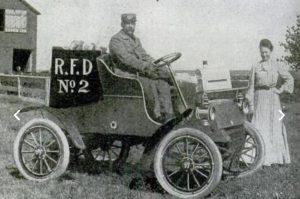 Imagine being a mail carrier between 1863 and 1922. I’m sure that you are wondering why those dates would be so important. Well, they really are. In 1863, the United States Postal Service began what they called Free City Delivery. This service brought about the beginning of home delivery of the mail, at least in the cities. I suppose it also brought on the need for the mail carrier. What it didn’t bring with it was a large degree of efficiency. The mail carrier was required to go to the door of the patron receiving mail, and knock. Then they waited patiently for someone to answer the door to take the mail. That is about the strangest idea to me. The person would either need to be home every day at the time the mail carrier was supposed to be
Imagine being a mail carrier between 1863 and 1922. I’m sure that you are wondering why those dates would be so important. Well, they really are. In 1863, the United States Postal Service began what they called Free City Delivery. This service brought about the beginning of home delivery of the mail, at least in the cities. I suppose it also brought on the need for the mail carrier. What it didn’t bring with it was a large degree of efficiency. The mail carrier was required to go to the door of the patron receiving mail, and knock. Then they waited patiently for someone to answer the door to take the mail. That is about the strangest idea to me. The person would either need to be home every day at the time the mail carrier was supposed to be  there, or somehow know the date something was coming…an impossible task in those days, or have someone else there to watch for the carrier. It was estimated that the carriers lost over 1.5 hours a day, waiting on the patrons to come to the door.
there, or somehow know the date something was coming…an impossible task in those days, or have someone else there to watch for the carrier. It was estimated that the carriers lost over 1.5 hours a day, waiting on the patrons to come to the door.
As early as 1880, the post office began to suggest that people put a letter box on their door, so that the mail could be left at the house, even if no one was home. The Post Office wanted wall-mounted mailboxes to the outside of the houses instead of mail slots. They wanted them to be mounted at the height of a standing man. The plan was that the carrier would not have to bend over to deposit mail, and the outgoing mail would stay dry. People are notoriously slow to accept change, and I’m sure this situation was no different.
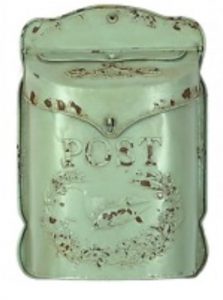
By 1916, with little change in the situation, the post office began working on a plan to achieve the compliance they needed. The deadline was set. The homes were to have a letter box by March 20, 1922. After that date, the mail would be held at the post office, if no letter box was in place. As we look back now, it seems strange to think that anyone would fight the letter box plan. It’s such a simple way to get your mail, and it does not involve a daily trip to the post office. I can’t imagine why anyone would want the hassle that not having a mail box at your home would bring. I think they probably felt same way after they had one for a while.
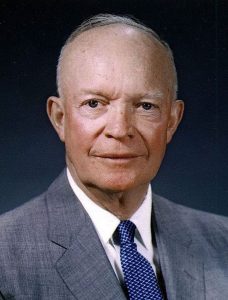 Recently, I found out that President Dwight D Eisenhower is my sixth cousin six times removed. We are connected on my mother’s side through her Pattan roots, which is her mother’s side. Eisenhower was the 34th president of the Unites States, serving from January 20, 1953 to January 20, 1961. He was also a five-star general in the United States Army during World War II and served as Supreme Commander of the Allied Expeditionary Forces in Europe. Eisenhower was responsible for planning and supervising the invasion of North Africa in Operation Torch in 1942 – 1943 and the successful invasion of France and Germany in 1944 – 1945 from the Western Front. In 1951, he became the first Supreme Commander of NATO.
Recently, I found out that President Dwight D Eisenhower is my sixth cousin six times removed. We are connected on my mother’s side through her Pattan roots, which is her mother’s side. Eisenhower was the 34th president of the Unites States, serving from January 20, 1953 to January 20, 1961. He was also a five-star general in the United States Army during World War II and served as Supreme Commander of the Allied Expeditionary Forces in Europe. Eisenhower was responsible for planning and supervising the invasion of North Africa in Operation Torch in 1942 – 1943 and the successful invasion of France and Germany in 1944 – 1945 from the Western Front. In 1951, he became the first Supreme Commander of NATO.
With everything else that he did, it seems odd, I suppose, to mention the fact that on March 18, 1959, he signed the Admission Act. Basically, the act dissolved the Territory of Hawaii and established the State of Hawaii as the 50th state to be admitted into the Union. Statehood became effective on August 21, 1959…the last state to join the United States. Eisenhower, in fact, was the president who signed the last two states into the United States. To me that must have been such an awe inspiring thing to get to do. My guess is that Eisenhower really had no idea that Hawaii would forever be the last state in the United States, and I suppose that it is still possible that  another may join, but it has been almost 58 years, so it seems highly unlikely that there will be another. I wonder if, as his life was drawing to a close, Eisenhower gave any thought to the fact that he got to do that…to bring in the final two states in the United States. I also wonder if anyone thought there would ever be more states after Arizona and New Mexico were added in 1912, almost 47 years earlier. Maybe, adding another state to our country didn’t seem like such an important thing for a president to do, but I think it is. And to be the president to add the last two states…well, I just think that is very cool.
another may join, but it has been almost 58 years, so it seems highly unlikely that there will be another. I wonder if, as his life was drawing to a close, Eisenhower gave any thought to the fact that he got to do that…to bring in the final two states in the United States. I also wonder if anyone thought there would ever be more states after Arizona and New Mexico were added in 1912, almost 47 years earlier. Maybe, adding another state to our country didn’t seem like such an important thing for a president to do, but I think it is. And to be the president to add the last two states…well, I just think that is very cool.
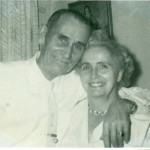 Like many avid genealogists, I find myself looking at my roots often. As Saint Patrick’s Day rolls around, I find myself contemplating my Irish roots. I’m sure there are more than I can begin to count, but I specifically know of the Shaw family. These are my grandmother, Harriett Byer’s ancestors. The thing that I find to be sad is that the records are not as extensive as I wish they were. My DNA connects me to this family, but the 1600s is as far as I have been able to trace. I suppose that many people would think that the 1600s is a long way back, but it is barely to the point of their immigration from Ireland to the United States. Even in America, the records aren’t well kept. I find it quite sad that some families are so meticulous in their record keeping, while others just weren’t.
Like many avid genealogists, I find myself looking at my roots often. As Saint Patrick’s Day rolls around, I find myself contemplating my Irish roots. I’m sure there are more than I can begin to count, but I specifically know of the Shaw family. These are my grandmother, Harriett Byer’s ancestors. The thing that I find to be sad is that the records are not as extensive as I wish they were. My DNA connects me to this family, but the 1600s is as far as I have been able to trace. I suppose that many people would think that the 1600s is a long way back, but it is barely to the point of their immigration from Ireland to the United States. Even in America, the records aren’t well kept. I find it quite sad that some families are so meticulous in their record keeping, while others just weren’t.
My Grandma Byer and her siblings were proud of their Irish roots. In their later years, they took a trip to Ireland to search for family information, graves, and living family members. I’m not sure if they found much 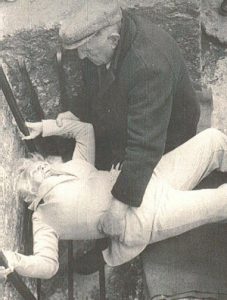 information, but without computers, information was harder to find then. It’s not that computers didn’t exist, but rather the simple fact that none of them knew how to use one. Nevertheless, they had a wonderful trip. They explored castles, town and villages, and they saw the amazing green fields that are synonymous of Ireland. They also did something that I have found interesting, when the had the opportunity to kiss the Blarney Stone. For those who don’t know about the Blarney Stone, “The Blarney Stone (Irish: Cloch na Blarnan) is a block of Carboniferous limestone built into the battlements of Blarney Castle, Blarney, about 8 kilometers (5 miles) from Cork, Ireland. According to legend, kissing the stone endows the kisser with the gift of the gab (great eloquence or skill at flattery).” It’s really just a goofy tradition, but I suppose it is a fun idea, and one they decided was worth testing.
information, but without computers, information was harder to find then. It’s not that computers didn’t exist, but rather the simple fact that none of them knew how to use one. Nevertheless, they had a wonderful trip. They explored castles, town and villages, and they saw the amazing green fields that are synonymous of Ireland. They also did something that I have found interesting, when the had the opportunity to kiss the Blarney Stone. For those who don’t know about the Blarney Stone, “The Blarney Stone (Irish: Cloch na Blarnan) is a block of Carboniferous limestone built into the battlements of Blarney Castle, Blarney, about 8 kilometers (5 miles) from Cork, Ireland. According to legend, kissing the stone endows the kisser with the gift of the gab (great eloquence or skill at flattery).” It’s really just a goofy tradition, but I suppose it is a fun idea, and one they decided was worth testing.
The big Saint Patrick’s Day parties are far more an American tradition than it is as Irish one. In fact, people might be surprised at the real background of the day. Saint Patrick’s Day was made an official Christian feast day in the early 17th century and is observed by the Catholic Church, the Anglican Communion (especially the Church of Ireland), the Eastern Orthodox Church, and the Lutheran Church. In reality, It is a day that  commemorates Saint Patrick and the arrival of Christianity in Ireland. It also celebrates the heritage and culture of the Irish in general. Celebrations generally involve public parades and festivals, cèilidhs (a social event at which there is Scottish or Irish folk music and singing, traditional dancing, and storytelling), and the wearing of green attire or shamrocks. Some Catholic Christians also attend church services and historically in Ireland the Lenten restrictions on eating and drinking alcohol were lifted for the day, which is likely where the holiday’s tradition of alcohol consumption came from. So, whether you celebrate in the tradition of America or the tradition of Ireland, Happy Saint Patrick’s Day to one and all.
commemorates Saint Patrick and the arrival of Christianity in Ireland. It also celebrates the heritage and culture of the Irish in general. Celebrations generally involve public parades and festivals, cèilidhs (a social event at which there is Scottish or Irish folk music and singing, traditional dancing, and storytelling), and the wearing of green attire or shamrocks. Some Catholic Christians also attend church services and historically in Ireland the Lenten restrictions on eating and drinking alcohol were lifted for the day, which is likely where the holiday’s tradition of alcohol consumption came from. So, whether you celebrate in the tradition of America or the tradition of Ireland, Happy Saint Patrick’s Day to one and all.
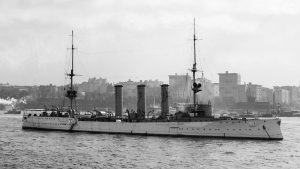 In any war, there are certain weapons, ships, planes, or vehicles that are somewhat, if not totally, feared by the enemy, and World War I was no exception. The Germans has a couple of light cruisers, the Dresden and the Emden. These cruisers were the fastest ships in the German Imperial Navy, capable of traveling at speeds of up to 24.5 knots. They weighed in at 3,600 tons, and they were two of the first German ships to be built with modern steam-turbine engines. The British actually had faster ships, but the Dresden had managed to avoid them…until March 14, 1915, that is. The Dresden was put in service in 1909, and kept very busy. Between August 1, 1914 and March 1915 the Dresden traveled over 21,000 miles.
In any war, there are certain weapons, ships, planes, or vehicles that are somewhat, if not totally, feared by the enemy, and World War I was no exception. The Germans has a couple of light cruisers, the Dresden and the Emden. These cruisers were the fastest ships in the German Imperial Navy, capable of traveling at speeds of up to 24.5 knots. They weighed in at 3,600 tons, and they were two of the first German ships to be built with modern steam-turbine engines. The British actually had faster ships, but the Dresden had managed to avoid them…until March 14, 1915, that is. The Dresden was put in service in 1909, and kept very busy. Between August 1, 1914 and March 1915 the Dresden traveled over 21,000 miles.
In the summer of 1914, the Dresden was patrolling the Caribbean Sea. Its assignment was to safeguard German investments and German citizens living abroad in the region. Then, on July 20, during a bitter civil war in Mexico, the Dresden was called upon to give safe passage to Mexican president, Victoriano Huerta, by transporting him and his family as they escaped to Jamaica, where they received asylum from the British government. Then came news from Europe of Austria’s ultimatum to Serbia and the imminent possibility of war. The German’s put the fleet on alert. By the first week of August the nations of Europe were at war. The Dresden was sent to South America to attack British shipping interests there, and it sunk several merchant ships as it traveled to Cape Horn, at the southern tip of Chile. The Dresden eluded the British naval squadron in 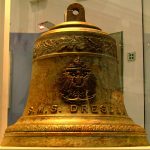 the region, commanded by Rear Admiral Sir Christopher Cradock. In October, the ship joined Admiral Maximilian von Spee’s German East Asia Squadron at Easter Island in the South Pacific. On November 1, Spee’s squadron, including Dresden, scored a crushing victory over the British in the Battle of Coronel, sinking two cruisers with all hands aboard, including Cradock, who went down with his flagship, Good Hope.
the region, commanded by Rear Admiral Sir Christopher Cradock. In October, the ship joined Admiral Maximilian von Spee’s German East Asia Squadron at Easter Island in the South Pacific. On November 1, Spee’s squadron, including Dresden, scored a crushing victory over the British in the Battle of Coronel, sinking two cruisers with all hands aboard, including Cradock, who went down with his flagship, Good Hope.
Just five weeks later, the Dresden was the only German ship to escape destruction at the Battle of the Falkland Islands on November 8, when the British light cruisers Inflexible and Invincible, commanded by Sir Doveton Sturdee, sank four of von Spee’s ships. Lost were Scharnhorst, Gneisenau, Leipzig and Nurnberg. As a crew member of Dresden wrote later of watching one of the other ships sink, “Each one of us knew he would never see his comrades again, no one on board the cruiser can have had any illusions about his fate.” Then the Dresden escaped under cover of bad weather south of the Falkland Islands.
Dresden consistently avoided capture by the British navy over the next several months, while sinking a number of cargo ships and then seeking refuge in the network of channels and bays in southern Chile. In need of repairs, the Dresden put into an island off the Chilean coast, in Cumberland Bay on March 8th. Captain, Fritz Emil von Luedecke, had decided the repairs were necessary in the wake of such heavy and extended use. Captain von Luedecke sent out many messages asking for fuel in the hopes of reaching any passing coal ships in the area, but the messages were picked up the British ships, Kent and Glasgow six days later. After a  hurried search, Kent and Glasgow found Dresden. When Kent opened fire, Dresden sent a few shots back, but soon raised the white flag of surrender. They knew they had no chance against the Kent in their current condition. A German representative negotiated a truce with the British sailors to stall for time, and von Luedecke ordered his crew to abandon the ship and scuttle it. Dresden sank slowly at first, then sharply listed to the side. Amid cheers from both the British on board their two ships and the German sailors that had escaped onto land, Dresden disappeared beneath the water, its German ensign flag flying. It was a sad ending to the five year, 21,000-mile career of one of Germany’s most famous World War I commerce-raiding ships.
hurried search, Kent and Glasgow found Dresden. When Kent opened fire, Dresden sent a few shots back, but soon raised the white flag of surrender. They knew they had no chance against the Kent in their current condition. A German representative negotiated a truce with the British sailors to stall for time, and von Luedecke ordered his crew to abandon the ship and scuttle it. Dresden sank slowly at first, then sharply listed to the side. Amid cheers from both the British on board their two ships and the German sailors that had escaped onto land, Dresden disappeared beneath the water, its German ensign flag flying. It was a sad ending to the five year, 21,000-mile career of one of Germany’s most famous World War I commerce-raiding ships.
 As a girl, I like many other girls became a Girl Scout. It was a group of girls having fun, while learning things and earning badges. The group was founded on March 12, 1912, and turns 105 years old today. The organization, called Girl Scouts, was founded in Savannah, Georgia by a woman named Juliette Gordon Low. She was born in 1860, and became a widow in 1905. She needed something…a cause. She had suffered through a bad marriage to a man who cheated on her and left most of his estate to his mistress. She wanted to help young women become self-sufficient…a cause borne out of her own experiences of feeling defined by the era’s roles for women, so she came up with the idea of a group that would teach young women about their worth and abilities. She first worked with a Scottish organization called Girl Guides and then founded the first American branch of the group in 1912, but she decided to break away and further develop her young women’s scouting association on her own. She soon changed the organization’s name to the Girl Scouts, and became the organization’s first president.
As a girl, I like many other girls became a Girl Scout. It was a group of girls having fun, while learning things and earning badges. The group was founded on March 12, 1912, and turns 105 years old today. The organization, called Girl Scouts, was founded in Savannah, Georgia by a woman named Juliette Gordon Low. She was born in 1860, and became a widow in 1905. She needed something…a cause. She had suffered through a bad marriage to a man who cheated on her and left most of his estate to his mistress. She wanted to help young women become self-sufficient…a cause borne out of her own experiences of feeling defined by the era’s roles for women, so she came up with the idea of a group that would teach young women about their worth and abilities. She first worked with a Scottish organization called Girl Guides and then founded the first American branch of the group in 1912, but she decided to break away and further develop her young women’s scouting association on her own. She soon changed the organization’s name to the Girl Scouts, and became the organization’s first president.
Low hoped to give her girls the opportunity to grow physically, mentally, emotionally, and even spiritually, Low 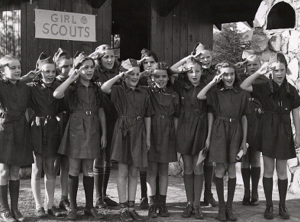 started the organization with just 18 girls in attendance at that first meeting. Low was an athlete, as well as an art lover. Her dream was to teach the girls that they could do anything. She wanted her girls to find out that they could help out in so many ways, and she definitely proved that. The Girl Scouts of America were very involved with the war effort back home during both World War I and World War II. They sold war bonds, collected peach pits for gas masks…peach pits were used as filters, worked in hospitals, and provided hands-on support to the country and the troops. Then, during the 1930s, when the Great Depression hit, the Girl Scouts again stepped up to the plate, collecting clothing and canned goods for the poor, making them quilts, providing meals for impoverished children, and helping out at hospitals.
started the organization with just 18 girls in attendance at that first meeting. Low was an athlete, as well as an art lover. Her dream was to teach the girls that they could do anything. She wanted her girls to find out that they could help out in so many ways, and she definitely proved that. The Girl Scouts of America were very involved with the war effort back home during both World War I and World War II. They sold war bonds, collected peach pits for gas masks…peach pits were used as filters, worked in hospitals, and provided hands-on support to the country and the troops. Then, during the 1930s, when the Great Depression hit, the Girl Scouts again stepped up to the plate, collecting clothing and canned goods for the poor, making them quilts, providing meals for impoverished children, and helping out at hospitals.
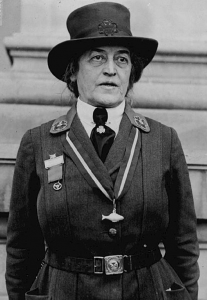
During my time in the Girl Scouts, I can’t say that I did anything that was as life changing as the Girl Scouts of days gone by, but I did enjoy my time as a scout. We learned many skills that earned us badges to wear on our sash, and some of those skills are still things I use today. The camaraderie that I felt as a Girl Scout was amazing. Some of the best friendships of my childhood were formed in those meetings. Those are years I will never forget, and I owe it all to Juliette Gordon Low, and her inspired ideas about what girls could be. Juliette Gordon Low died of breast cancer in 1927, in her Savannah, Georgia home. She was 66 years old. It was her request that she be buried in her Girl Scout uniform, because her years with the Girl Scouts were truly the happiest hears of her life. She also requested that a telegram from the National Board of Girl Scouts of the USA be placed in her pocket. It read, “You are not only the first Girl Scout, you are the best Girl Scout of them all.”
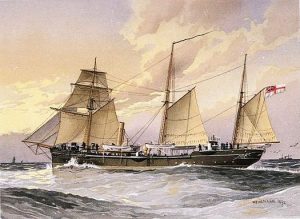 Some wars can last for years and years, while others are relatively short lived, but no war, at least to date, has been as short as the Anglo-Zanzibar War that was fought on August 27, 1896. The war was so short, that it is estimated to have lasted between 38 and 40 minutes…yes, I said minutes. The cause of the war was the sudden and unexplained death of pro-British Sultan Hamad bin Thuwaini, followed by the subsequent succession of Sultan Khalid bin Barghash, who was suspected of killing his uncle in order to take over. The British authorities preferred Hamud bin Muhammed, who was well known for his favorable stance toward British interests. A treaty signed in 1886, called for any candidate for accession to the sultanate, to be approved by the British consul, and Khalid had not fulfilled this requirement. The British considered this an act of war and sent an ultimatum to Khalid demanding that he order his forces to stand down and leave the palace. In response, Khalid called up his palace guard and barricaded himself inside the palace.
Some wars can last for years and years, while others are relatively short lived, but no war, at least to date, has been as short as the Anglo-Zanzibar War that was fought on August 27, 1896. The war was so short, that it is estimated to have lasted between 38 and 40 minutes…yes, I said minutes. The cause of the war was the sudden and unexplained death of pro-British Sultan Hamad bin Thuwaini, followed by the subsequent succession of Sultan Khalid bin Barghash, who was suspected of killing his uncle in order to take over. The British authorities preferred Hamud bin Muhammed, who was well known for his favorable stance toward British interests. A treaty signed in 1886, called for any candidate for accession to the sultanate, to be approved by the British consul, and Khalid had not fulfilled this requirement. The British considered this an act of war and sent an ultimatum to Khalid demanding that he order his forces to stand down and leave the palace. In response, Khalid called up his palace guard and barricaded himself inside the palace.
At 9:00am East Africa Time on 27 August, the ultimatum expired. The British had gathered three cruisers, two gunboats, 150 marines and sailors, and 900 Zanzibaris in the harbor area. The Royal Navy contingent were  under the command of Rear-Admiral Harry Rawson while their Zanzibaris were commanded by Brigadier-General Lloyd Mathews of the Zanzibar army, who was also the First Minister of Zanzibar. Around 2,800 Zanzibaris defended the palace, most of whom were recruited from the civilian population, but they also included the sultan’s palace guard and several hundred of his servants and slaves. The defenders had several artillery pieces and machine guns, which were set in front of the palace sighted at the British ships. The first bombardment, launched at 9:02am quickly set the palace on fire, disabling the defending artillery. A small naval action took place in the harbor, with the British sinking the Zanzibari royal yacht HHS Glasgow and two smaller vessels. The palace fired some shots ineffectually at the pro-British Zanzibari troops as they approached the palace. The flag at the palace was shot down and fire ceased at 9:40am. It was almost a matter of ready…aim…oh, never mind.
under the command of Rear-Admiral Harry Rawson while their Zanzibaris were commanded by Brigadier-General Lloyd Mathews of the Zanzibar army, who was also the First Minister of Zanzibar. Around 2,800 Zanzibaris defended the palace, most of whom were recruited from the civilian population, but they also included the sultan’s palace guard and several hundred of his servants and slaves. The defenders had several artillery pieces and machine guns, which were set in front of the palace sighted at the British ships. The first bombardment, launched at 9:02am quickly set the palace on fire, disabling the defending artillery. A small naval action took place in the harbor, with the British sinking the Zanzibari royal yacht HHS Glasgow and two smaller vessels. The palace fired some shots ineffectually at the pro-British Zanzibari troops as they approached the palace. The flag at the palace was shot down and fire ceased at 9:40am. It was almost a matter of ready…aim…oh, never mind.
Sultan Khalid bin Barghash’s forces sustained roughly 500 casualties, while the British only had one sailor injured. Sultan Khalid immediately ran to the German consulate, where he was given asylum and then he escaped to German East Africa, located in the mainland part of present day Tanzania. The British quickly placed Sultan Hamud bin Muhammed in power at the head of a puppet government. The war marked the end of the Zanzibar Sultanate as a sovereign state and the start of a period of heavy British influence. The badly damaged palace complex was completely changed by the war. The harem, lighthouse and palace were demolished as the 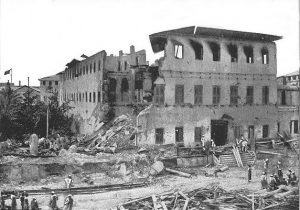 bombardment had left them unsafe. The palace site was turned into an area of gardens, and a new palace was erected on the site of the harem. The House of Wonders was almost undamaged and would later become the main secretariat for the British governing authorities. During renovation work on the House of Wonders in 1897, a clock tower was added to its frontage to replace the lighthouse lost to the shelling. The wreck of the Glasgow remained in the harbor in front of the palace, where the shallow waters ensured that her masts would remain visible for several years to come, as a reminder of what would happen if the treaty was not followed. In 1912, it was finally broken up for scrap.
bombardment had left them unsafe. The palace site was turned into an area of gardens, and a new palace was erected on the site of the harem. The House of Wonders was almost undamaged and would later become the main secretariat for the British governing authorities. During renovation work on the House of Wonders in 1897, a clock tower was added to its frontage to replace the lighthouse lost to the shelling. The wreck of the Glasgow remained in the harbor in front of the palace, where the shallow waters ensured that her masts would remain visible for several years to come, as a reminder of what would happen if the treaty was not followed. In 1912, it was finally broken up for scrap.

